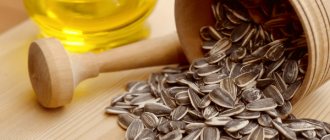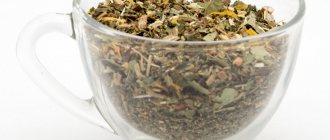Almonds are a unique nut that is harvested from a perennial shrub or small tree. The fruits have special value for humans and serve as a useful dietary supplement. The rich chemical composition allows the product to be used in cooking and cosmetology. The nut is light, 1 piece rarely weighs more than 2 g, most often the weight is 1 g. There are several varieties of almonds, each of which is used in different areas. The taste of the product improves after appropriate heat treatment. In order for it to bring exceptional benefits to the body, you should know several features of its selection, storage and use.
Varieties of almonds
Currently, only two types of almonds are predominantly used in cosmetology and cooking, each of which has beneficial properties:
- Bitter look. The product is not suitable for internal consumption. Most often used for the production of valuable oils, liquid soaps and various fragrances. Due to its high toxicity, ingestion of the nut can cause serious poisoning.
- Sweet variety. It is used mainly in cooking as a food additive and for the preparation of natural cosmetics. It is consumed dried and fried.
The unpeeled ripe fruits of the almond tree are called bod. Usually, only the sweet variety of nut can be purchased in this form.
What is the difference and how to tell the difference?
By appearance
How bitter differs from regular sweet in appearance is not easy to understand
It is worth paying attention to the size. Sweet fruits are larger
When purchasing unshelled kernels, touch the shell. Bitter fruits have a stronger shell that can only be broken with a hammer.
By taste and smell
- Sweet almonds have a less pronounced nutty smell. Kernel taste:
- sweetish;
- fatty;
- fragile;
- without bitterness.
- Bitter seeds, when crushed, emit a bright almond aroma due to the essential oil content. Heat treatment of the kernels destroys the structure of toxic enzymes, but the bitterness in the taste remains, so such nuts are not used for food in large quantities.
By chemical composition
In terms of chemical composition, bitter almonds differ from sweet almonds in that they contain amygdalin and essential oil. Otherwise, these two fruits have a similar rich chemical composition:
- vegetable fats;
- protein;
- fiber,
- vitamins (E, PP, group B);
- microelements (calcium, magnesium, zinc, iron, phosphorus fluorine);
- amino acids and other components beneficial to the body.
By benefit and harm
Almonds, both bitter and sweet, contain a high concentration of vitamin E and plant antioxidants, which have a beneficial effect on the health and appearance of the skin. The content of B vitamins and minerals are beneficial for hair and nails, teeth and bones.
Also, the fruits of the almond tree regulate the acidity of gastric juice; their use is recommended for stomach and duodenal ulcers. Kernels are also useful for:
- anemia;
- diseases of the cardiovascular system;
- organs of vision;
- neuroses;
- exhaustion of the body during illness.
Regular consumption of almonds improves brain function. It is useful for people over the age of 50 to eat almond seeds to prevent the development of senile dementia.
Bitter almonds, unlike sweet ones, are useful as an anthelmintic drug. It has an analgesic effect and improves metabolism. Amygdalin, contained in bitter almonds, has a narcotic effect on the body, causing hallucinations and poisoning.
Excessive consumption of fresh kernels (50 pieces) is deadly. Despite all the benefits of bitter almonds, due to its toxic properties, the consumption rate is 1-2 kernels per day. Children are generally not recommended to consume such fruits.
The harm of sweet almonds is associated with its ability to cause allergies. This product should be introduced into the diet gradually, in small quantities. The consumption rate must also be observed due to the high calorie content of the fruit. Overeating causes flatulence, diarrhea, and intestinal pain due to the high fiber content. Also, phytic acid contained in the kernels slows down the absorption of calcium, iron and magnesium.
Attention!
To obtain maximum benefits, it is recommended to soak almonds in salted water overnight (up to 12 hours) before consumption. If we compare the two types, the bitter variety is considered healthier. It is used for medicinal purposes in combination with other medications. However, its negative properties are also higher and more dangerous than those of its sweet relative.
By area of application
Bitter almonds are used in medicine, cosmetology, and soap making.
- In pharmacology, its seeds, oil and the plant itself are used as a component in syrups, ointments, emulsions with the following spectrum of action:
- analgesic;
narcotic;
- hypnotic;
- sedative;
- diuretic;
- antispasmodic;
- vasodilator.
- In homeopathy, this type of almond is used to treat the respiratory system.
- In cosmetology, oil is used, which, due to its high content of oleic acid, is quickly absorbed into skin cells. It has a softening, soothing, moisturizing and cleansing effect. Almond oil also strengthens hair and stimulates its growth.
- In soap making, the oil is cleared of amygdalin before use.
- In cooking, bitter almonds are used in extremely small doses to enhance the nutty aroma and add piquancy to the taste. Sweet fruits, on the contrary, are widely used in confectionery, as an additive to vegetables, meat, fish and sauces. Almonds are used to prepare:
- marzipan;
halva;
- added to sweets;
- cookie;
- cakes.
- In gardening. Almonds are a good honey plant; they are used in gardening for the rootstock of apricots and peaches.
- The perfume industry also uses almond oil from sweet kernels.
Almond bitter oil is also added as an injection solvent.
Almond flour is also popular, which replaces wheat flour for making healthy desserts.
Chemical composition
The chemical composition of almonds is unique because it combines many valuable components that have a positive effect on the human body. The following are considered the most useful:
| Components | Approximate quantity per 100 g of product | |
| Vitamins |
| |
| Minerals |
| |
| Cellulose | About 8 g | |
| Fatty acid |
| |
| Sahara | Not less than 5 g | |
| Nonessential amino acids | Alanine, serine and tyrosine in the amount of 0.50-0.80 g | |
| Essential amino acids |
| |
| Starch | Approximately 6-7 g | |
| Ash | 3-4 g | |
| Water | 4-5 g | |
The energy value, or caloric content, of the product is high and ranges from 570 to 600 calories per 100 grams. 1 piece of almond contains approximately 6-10 kcal, depending on its weight. Nutritional value is represented by the ratio of proteins, fats and carbohydrates (BJU) and is approximately 19/55/14 g for every 100 g of product.
Calorie content of roasted almonds
Roasted almonds are very popular with customers, as they are easier to bite. And simply eating fried is much tastier than raw. However, its calorie content is slightly higher - 623 kcal per 100g, so you should not abuse the delicacy.
Photo source: shutterstock.com
The ratio of BZHU product is represented by the following indicators:
- proteins - 23 g;
- fats - 55.83 g;
- carbohydrates - 12.81 gr.
The weight of one roasted nut ranges from 1.8 grams, so the calorie content of 1 piece is 11.2 kcal. Accordingly, the nutritional value of the product (BJU) is 0.4/1.0/0.23 g.
ABC RECOMMENDS
What is the calorie content of dates: benefits and harm to the body, composition and BZHU per 100 grams
Beneficial features
Despite their high energy value, almonds have many beneficial properties for the human body. The following are considered the most valuable:
- promotes the removal of toxins and waste from the body;
- strengthens the vascular wall, prevents the deposition of cholesterol plaques and is used for the treatment of atherosclerosis;
- improves heart function and is used in the treatment of mild heart failure;
- normalizes metabolic processes and stimulates them, used in dietary nutrition for weight loss;
- regulates blood glucose levels and is indicated for the treatment and prevention of diabetes;
- replenishes iodine deficiency and prevents the development of hypothyroidism;
- strengthens bones and prevents osteoporosis;
- has a sedative effect and is indicated for nervous disorders and frequent stress;
- normalizes the amount and composition of gastric juice, used for gastritis with high acidity;
- stimulates tissue regeneration processes;
- improves visual function, helps prevent myopia;
- has an antioxidant effect on cells and tissues;
- has antiseptic, anti-inflammatory, choleretic, mild laxative and diuretic properties;
- replenishes the deficiency of minerals and valuable vitamins;
- strengthens the immune system;
- improves blood composition, can be used for the prevention and treatment of anemia;
- tones the body;
- promotes rapid saturation and maintains a feeling of fullness for a long time;
- prevents frequent colds and viral illnesses.
The diuretic properties of the product are often used as part of a complex treatment of the kidneys when sand is detected in them. The laxative effect helps in the treatment of chronic constipation.
For women, almonds are indispensable because they normalize hormonal balance and the menstrual cycle, eliminate pain during menstruation, improve the condition of hair, epidermis, nails, and the composition of breast milk. During pregnancy, it strengthens the mother's immunity, replenishes the lack of vitamins, gives vigor, prevents the development of various fetal defects, helps cope with the symptoms of toxicosis, and the diuretic effect prevents the appearance of edema.
For men, the product is also useful because it increases endurance and physical strength several times, prevents the formation and helps in the treatment of prostatitis, improves sexual function and prevents its early decline.
It is useful for children to consume almonds in order to prevent frequent colds and viral illnesses, replenish the deficiency of minerals and valuable vitamins, normalize brain function, memory, and attention.
The benefits and harms of almonds
Almonds are recognized as a medicinal plant that brings healing to the body and has a number of beneficial properties for it, namely:
- Necessary for proper healthy nutrition, thanks to a set of phytochemicals, it protects the body from many diseases, including cancer.
- Rich in saturated fatty acids, which remove bad cholesterol.
- Prevents heart disease and saturates the blood with beneficial microorganisms, thanks to the high content of potassium and magnesium.
- Gives a charge of vigor and strength, increases performance.
- Increases immunity.
- Slows down skin aging.
- Perfect for dietary nutrition, it relieves hunger for a long time, and, since it does not contain gluten, can be used to treat allergies to cereal products.
- The vitamins in almonds are essential for cellular metabolism.
- Zinc in almonds is beneficial for men of reproductive age, as it stimulates sexual activity and increases sperm count.
- Vitamin E is necessary for the maintenance and beauty of skin and hair, being a strong antioxidant.
- Soothes headaches and the nervous system, treats migraines.
- Helps reduce blood pressure and dilate blood vessels in the body.
- Thanks to arginine, almonds are indispensable in sports nutrition.
- Treats stage 2 diabetes, controls and reduces sugar levels.
- Removes excess fluid from the body and salts from joints.
It is recommended to eat almonds with the skin and, despite the great benefits of almonds, it must be remembered that overeating this nut can lead to serious consequences, namely:
to severe allergies (can cause vomiting, diarrhea, severe swelling of the lips and tongue, it is better to limit yourself to small portions no more than twice a day);
to poisoning (raw or unripe almonds contain a toxic substance - hydrocyanic acid; in case of poisoning, you should urgently call a doctor and induce vomiting);
to gaining excess weight (it is a high-calorie product and should be consumed carefully and in moderation);
to stagnation in the stomach (a large amount of almonds eaten can cause difficulty in digesting it, which will cause gastrointestinal upset).
https://www.youtube.com/watch?v=https://www.youtube.com/watch?v=CgCZtI0iYKQ
Contraindications
Cases of contraindications for almonds:
- Almonds are contraindicated for people with severe allergies and individual intolerance to this product.
- The nut is contraindicated for obese people.
- Remove almonds from the diet for people suffering from heart rhythm disturbances and serious heart diseases due to the high content of essential oils.
- Almonds are contraindicated in acute disorders of the central nervous system.
Almonds grow and are cultivated in many parts of the world; in Russia, almonds actively grow in the countries of the near and far Caucasus, in the western part of Siberia, as well as in the European part. Almonds have a second name among the people – “bean”. Few people know that the nut itself is a kind of plant seed, which is obtained by splitting the shell of the pericarp.
Today, this popular nut can not only decorate the taste of dishes, but also become an indispensable home remedy or balm for every day.
Contraindications
Despite many valuable properties for the human body, the product can be harmful to health if used incorrectly. There are several contraindications that will prevent the use of nuts for food:
- recovery period after surgery on the digestive system;
- severe forms of digestive disorders in combination with reduced motility of the small and large intestines;
- age up to 3 years;
- severe pathologies of the liver and gall bladder;
- colitis, peptic ulcer, pancreatitis in the acute stage;
It is strictly contraindicated to use the product if you are allergic to it. Almonds contain essential oils in large quantities, so they are among the strongest allergens.
If you exceed the permissible norm of the nut, side effects appear in the form of indigestion, nausea, in some cases vomiting, dizziness, spasms of the smooth muscles of the intestine, exacerbation of chronic diseases of the digestive system, rash, irritation, hyperemia (redness) of the skin.
In people with bronchial asthma and a tendency to allergic reactions, symptoms may include signs of suffocation and fear of death. The condition is life-threatening.
If such symptoms appear, you should immediately contact a specialist and exclude the possibility of further use of the product.
Calorie table
| Type of almond | Kcal per 100 g | Kcal in 1 piece. |
| Raw | 575 | 11,5 |
| Fried | 623 | 11,2 |
| Dried | 634 | 9,51 |
| Almond milk | 51 |
In conclusion, it is worth noting that in addition to the usual sweet almonds, there are also bitter ones. However, its calorie content is similar to the energy value of its “brother”. You can find out what will happen to the human body if you eat 20 almonds a day (daily requirement) from the video:
Selection and storage
Only a high-quality product will benefit the body. This is why you should choose the right almonds. It is recommended to give preference to dried product in sealed packaging. The expiration date is also important and you should pay attention to it. If the product is purchased in a shell, it must be intact, without mold or other visible defects.
If the nut is in shell, it should be properly peeled using a nut cracker. Do not use a hammer as it may damage the kernels. After removing the shells, soak the nuts in water for 5 minutes. After this, the product can be peeled, which imparts bitterness when consumed.
Almonds can be stored for a long time at home. In the freezer this period is more than 12 months, in the refrigerator - almost a year. If you store the fruit at room temperature, you should prevent moisture and sunlight from directly coming into contact with the product. In such conditions, nuts can be stored for more than six months. It is not recommended to keep crushed kernels for a long time, as they lose most of their beneficial properties and may become bitter.
History of the origin of almonds
Almond (lat. Prunus dulcis) is a shrub or small tree from the subgenus Almond (Amygdalus) of the Plum genus. Almonds are commonly called a nut, but it is more correct to call them the seed of an almond kernel, which is extracted from the fruit of a green shrubby plant.
Almond is a branched shrub (tree) up to 6 meters high. Its fruits are light brown and velvety seeds up to 3.5 centimeters in length and weighing up to 5 grams, covered with small dimples and grooves. Almonds grow on rocky slopes at an altitude of 800-1600 m above sea level (Bukhara almond reaches 2500 m), on calcium-rich soils. Light-loving, drought-resistant thanks to a well-developed root system. The fruits ripen in June-July. Fruiting begins at 4-5 years and lasts 30-50 years. Almonds are up to 130 years old.
The homeland of almonds is considered to be the territory of modern Turkey; from there it came to Europe and then to America. Mention of almond cultivation dates back to early BC. The almond blossom period was considered a symbol of the beginning of the new year. Almonds were used in embalming the dead: traces of almond oil were found in the tomb of the Egyptian king Tutankhamun.
Today, the most extensive plantations of almond trees are located in the USA (California), China, Syria, Iran, Morocco, Italy, Spain, Portugal, and the Mediterranean region. In Europe, almonds are grown in the warm regions of Slovakia and the Czech Republic, in the vicinity of Litomerice.
The climatic conditions of Russia are unfavorable for the ripening of nuts, so our country imports almonds from these countries. In the republics of the former Soviet Union, almonds are mainly grown in Tajikistan. The city of Kanibadam is rightfully considered the city of blooming almonds.
Transport costs and customs duties, the high nutritional value of almonds for the human body determined the high price of the product.
Rules of use
The benefits of the nut can only be obtained with moderate consumption. It is not recommended for a healthy person to eat more than 15 pieces per day, which is equivalent to 30 g. For women during menstruation and menopause, the daily norm is 40 g. During pregnancy, 50 g per day is allowed no more than 3 times a week. If breastfeeding, you should first consult with a specialist and start using 5-7 pieces. If the baby does not experience any negative reactions, you can increase the dose to 10-15 pieces per day.
An adult and healthy man is allowed up to 70 g of nuts per day. If unpleasant symptoms appear, you should reduce the amount to 50 g and observe the reaction. For children, 5 pieces per day are enough to maintain immunity and tone the body. People with severe obesity should limit the amount of product to 30 g per day.
It is recommended to eat the nut as a snack on its own. This will allow it to be absorbed into the body as much as possible. For children under 7 years of age, it is allowed to be used in baked goods or other desserts.
It is strictly contraindicated to eat raw almonds due to their high content of toxic compounds. If possible, you should use dried product or, as a last resort, fried product. However, it has been proven that roasted almonds lose more than half of their valuable properties.
Daily intake of almonds
Nutritionists recommend adhering to the following standards for consuming this delicacy:
- the daily dose for adults should not exceed 40 g;
- Children are allowed to give almond kernels from the age of 3, starting with a minimum amount of 10-15 grams;
- For teenagers and older people, it is most beneficial to stick to the golden mean of 25-30 grams.
Pregnant women and people suffering from chronic diseases should first consult a doctor about the daily dosage. It is especially important to specify the methods of use and quantity for obesity and diabetes.
The average daily intake of almonds for adults without harm to health is 40 grams. It is enough to eat 22-25 kernels (with honey).
Essential oil
A valuable essential oil is extracted from bitter almond varieties, which has powerful regenerating, rejuvenating, antiseptic and anti-inflammatory properties. The product is obtained by cold pressing and is widely used in cosmetology. Regular use of the product in its pure form for hair and skin of the face and body allows you to get rid of acne, dandruff and irritation, prevent baldness, split ends, smoothes wrinkles, tones the skin, and protects against the negative effects of environmental factors.
A variety of homemade masks for skin and hair are also prepared based on the product. It is often included in various cosmetics. You can buy oil at the pharmacy. It has almost no color, has a light texture, a pleasant nut aroma and does not stain clothes.
Almonds in dietetics
Almonds are actively used in various fields of activity, in particular, they are widely used in dietetics. It is recommended to be introduced into the diet during a diet, since it not only cleanses the body of toxins and toxins, but also, due to its high content of vitamins, prevents exhaustion of the body and vitamin deficiency, which often occurs due to an irrationally composed menu in those wishing to lose weight.
First of all, the effectiveness of almonds for weight loss lies in its ability to satisfy hunger for a long time. This allows you to move away from your usual diet and not feel hungry all day. Other nuts have similar properties. For example, the calorie content of pistachios allows them to be included in the diet along with king nuts.
The fiber contained in nuts allows you to cleanse the intestines, and therefore improve its digestibility for the body. If necessary, you can speed up your metabolism with other products. For example, the calorie content of seaweed is low, but its ability to restore metabolic processes and eliminate iodine deficiency helps not only to lose weight, but also to eliminate some health problems.
The only pitfall that you may encounter when consuming almonds during a diet is improper preparation. In order for nuts to bring more benefits, they need to be “activated”. To do this, almonds need to be soaked for 6-8 hours. This procedure gets rid of phytic acid and makes almonds even more useful. In addition, during the diet you should avoid roasted almonds, because their calorie content per 100 grams is very high.
Almond jam
Jam with the addition of almonds is not only tasty, but also very healthy. You can add the product to apricot, cherry or strawberry jam at the rate of 200 g per liter jar. Before combining the nuts with the berry mixture, you should boil them in water for 10 minutes; there is no need to chop them.
To prepare this delicacy, you can take dried or raw almonds. For the first option, the heat treatment time can be reduced to 5 minutes. The finished mixture is rolled into jars according to the usual principle and stored in a cool place.
How to eat almonds correctly
The daily norm for these grains is 20-30 grams, but definitely not more than 50. They are consumed raw, fried or in desserts (sometimes in hot first and second courses).
Spices and crumbs are made from almonds. Nuts are peeled by crushing them with a hammer or using a nutcracker. It is imperative to peel the kernel, it contains toxic substances.
This is done in several steps:
- Boil in boiling water for 10-15 minutes.
- Pour in cold water for 10 minutes.
- By pressing on the nut, the brown corrugated skin is removed.
- Dry in the oven on a dry baking sheet for 3 minutes at 100 degrees.
Walnuts for weight loss: mechanism of action, rules of use
Is it possible to eat walnuts on a diet? This is a question that worries everyone who wants to get rid of unnecessary pounds. The answer is positive - the product is not only possible, but also necessary to use when losing weight.
But why does a nut, having a high calorie content, help you lose weight? Let's take a closer look at how the product works when it enters our body, and how it promotes weight loss:
Doesn't add calories. Many people who are losing weight undeservedly refuse nuts, knowing their high calorie content. However, as mentioned above, high calorie content is characterized by 100 g of product or 50 pcs. fruits No matter how much you want, it is impossible to eat such an amount. For weight loss, the dose of nuts is 4-6 pieces. This amount will not only add unnecessary calories. Speeds up metabolism. A large amount of fat in the product improves digestion, increases the absorption of valuable substances, and activates metabolism. This in turn helps to reduce weight. Long saturation. The nuclei contain a decent concentration of proteins, the breakdown of which takes a very long time. Therefore, even a tiny number of cores (literally 1-2 pieces) gives a long-lasting feeling of saturation. At the same time, proteins promote the growth of muscle tissue. Fiber content. Dietary fiber helps normalize digestion and gently cleanses the body of unnecessary substances and waste products. Cleansing the body while losing weight will give an additional bonus - beautiful skin without rashes, thick and beautiful hair. Energy
Due to the carbohydrate content, the body receives the necessary energy boost, which is very important when dieting. By losing weight with walnuts, you will get rid of weakness and loss of strength. Rich vitamin complex
A large amount of vitamins and antioxidants not only saturates the body with valuable substances, but also prevents cellular oxidation, relieves depression and bad mood - frequent “companions” of diets. As a result, you not only lose weight without psycho-emotional jumps, but also rejuvenate and heal your body. Nuts help stabilize hormonal levels, imbalance of which is one of the common causes of weight gain. Normalization of hormones occurs regardless of gender.
How to use the product correctly when losing weight
To ensure guaranteed weight loss, it is important to consume nuts correctly. There are certain rules for taking the product that will greatly increase the effectiveness of the diet:
- When losing weight, the product should not be eaten on an empty stomach, since the nut is a heavy food. Before eating it, eat some vegetable salad.
- When on a kernel diet, you need to consume 20-30 g (4-6 pieces) once a day. You can drink it with vegetable or fruit juice.
- For weight loss in expectant mothers, the recommended daily dose is 3-4 fetuses. To get rid of extra pounds while breastfeeding, 1-2 nucleoli a day is enough, provided that the baby is already 3 months old (it is necessary to monitor the baby’s reaction).
- You need to eat nuts in the morning. It is at this time that the product gives the body the necessary energy. If you eat kernels later in the afternoon or evening, they will be converted into fatty tissue, since at this time the body does not need to “recharge”, it needs rest.
Before introducing healthy kernels into your diet, you should familiarize yourself with the contraindications. Under no circumstances should you lose weight with nuts in the following cases:
- Individual intolerance to nuts, allergic reaction;
- Diseases of the gastrointestinal tract in the acute stage;
- Severe diarrhea.
There is no need to exceed the recommended daily dose of kernels. And it's not just about calories. Excessive consumption of the product can provoke:
- Allergic reaction: rash; redness, swelling and itching of the skin; allergic runny nose, lacrimation;
- Headaches, digestive disorders - heaviness in the stomach, nausea, flatulence, diarrhea.
Despite their calorie content, walnuts are an excellent product for weight loss; you just need to introduce them into your diet and consume them correctly. Then valuable nucleoli will not only help you get rid of unnecessary kilograms, but will also saturate the body with valuable substances, strengthen the immune system, and slow down the aging process.
All materials on the Priroda-Znaet.ru website are presented for informational purposes only. Before using any product, consultation with a doctor is MANDATORY!
What to cook with almonds
Chicken salad
- Calorie content of a 100 g serving: 110 kcal.
- Cooking time: 70 minutes.
- Ingredients:
| chicken fillet | 200 g |
| tomato juice | 50 ml |
| cheese | 15 g |
| tomatoes | 3 pcs. |
| almond | 20 g |
| garlic | 1 clove |
| salt | taste |
How to cook:
- Boil the chicken.
- Take it apart into fibers.
- Prepare the sauce: grind nuts, garlic and a little salt in a blender. You should get a homogeneous mass.
- Pour the sauce over the chicken and leave to marinate for 1 hour at room temperature (if necessary, you can move the meat to the refrigerator, but increase the marinating time).
- Before serving, cut the tomatoes into slices and place them on a serving plate.
- Place the chicken between the slices.
- Garnish the salad with grated cheese.
Nut milk
- Calorie content of 100 g serving: 77 kcal.
- Cooking time: 20 minutes.
- Ingredients:
| almond | 70 g |
| water | 125 ml |
How to cook:
- Boil the water.
- Cool it to room temperature.
- Place the peeled nuts in a blender bowl, add a little water (no more than 5 tbsp.). Grind at low speed.
- Strain the resulting mixture using a strainer.
- Add water to the resulting liquid.
- Leftover nuts can be used in preparing other dishes.
Pear salad
- Calorie content of 100 g serving: 48 kcal.
- Cooking time: 10 minutes.
- Ingredients:
| pear | 1 PC. |
| orange | 1 PC. |
| carrot | 1 PC. |
| almond | 10 g |
| arugula | 100 g |
| balsamico | taste |
How to cook:
- Squeeze the juice from the orange.
- Cut the pear into thin slices.
- Pour juice over the pear.
- Leave for a few minutes.
- Cut the carrots into strips.
- Arrange the salad: arrange the arugula evenly on a serving plate.
- We place pears and carrots on it in a chaotic order.
- Decorate the salad with almond petals.
- If necessary, you can use balsamic as a dressing.
Dishes
Although almonds can be used in many recipes, they are most often found in desserts, and not just homemade ones. For example, it is a favorite ingredient of confectioners when making chocolate and chocolate candies. The most famous and popular are:
- Roasted candies “Krokant” with almonds (calorie content per 100 g – 396 kcal).
- Almonds in chocolate (calorie content per 100 g – 560 kcal).
- Candies “Prunes with almonds in chocolate” (calorie content per 100 g – 530 kcal).
- Candies “Dates with almonds in chocolate” (calorie content per 100 g – 304 kcal).
- Babaevsky Gorky chocolate with whole almonds (calorie content per 100 g – 570 kcal).
- Ritter Sport winter chocolate (calorie content per 100 g – 532 kcal).
For those losing weight, all of the sweets listed are prohibited. Only occasionally can you afford a small piece of Babaevsky Dark Chocolate. Ready-made almond pastries (for example, a croissant with almond cream, the calorie content of which is at least 385 kcal per 100 g) look even less suitable for the diet. For those watching their figure, only homemade almond cheesecake is suitable, the energy value of which does not exceed 189 kcal per 100 g.
Cheesecakes
Beat one egg with 1 tablespoon of sugar until foamy. 20 g of a sweet-looking nut, coarsely chopped. Add 50 g of milk and cottage cheese, 30 g of flour (it’s great if it’s also almond flour) and a nut to the egg. Mix everything thoroughly. The finished mass is distributed into molds and baked for 1 hour at 160 degrees. Serve a chilled dessert with fresh berries, preferably sour.
Coffee
Banana-almond coffee can be considered a real treat for dieters. The calorie content per 100 g of drink is 105 kcal.
One ripe banana is mashed with a fork and placed in a tall glass glass. In a separate container, mix a glass of ready-made espresso, 100 ml of milk and 2 tablespoons of nuts crushed to a coarse crumb. The mixture is poured into a glass with a banana and stirred. Add 5 g of cinnamon powder. Spread some whipped cream on top and drizzle with chocolate topping. If you do not use the last 2 components, the drink will be less caloric, but no less tasty.
Milk
Homemade almond milk is definitely a healthy drink. Thanks to it, mood and vigor increase, nervous tension decreases. Since milk is nutritious, it can easily replace your usual afternoon snack. Calorie content per 100 g is 126 kcal.
For preparation, 500 ml of milk and 50 g of kernels are required. Place the almonds in boiling water for 10 minutes. Then remove the skin and blend in a blender. Pour in a little milk and beat for 5 minutes. Add the remaining milk and 30 g of honey, beat for 3 minutes. Strain before use.
Sauce
The aromatic sauce with a calorie content of 78 kcal per 100 g can be consumed cold or hot, served with fish and meat.
80 g of onion cut into half rings. 1 PC. red bell pepper cut into strips. Fry the vegetables in olive oil with constant stirring for about 5 minutes. Remove from the heat, add a little pepper and salt, add a tablespoon of wine vinegar and stir. 30 g of sweet-looking kernels are fried in a frying pan and ground in a blender. Add vegetables and beat again.
Almonds: calories per 100g, carbohydrates, proteins and fats
Almonds are a delicious overseas delicacy that many of our compatriots enjoy. This nut is often used in all kinds of confectionery and candies. Almond milk is made from it, which is included in many creams, pralines and other desserts.
The fruit is valued for its delicate creamy taste and great nutritional value. But, despite the benefits of such a nut, many who like to eat such a healthy fruit are interested in how many kilocalories it contains, what their energy value is and whether the fruit will help you lose weight.
We will discuss these and other questions below.
Composition and beneficial properties
The composition of nuts includes: fats – 50%, proteins – 22%, carbohydrates – 22%. Almonds are a storehouse of nutrients, vitamins and microelements. It contains B vitamins that are valuable for humans, and a vitamin of youth that is beneficial for the skin - tocopherol (vitamin E).
Nuts are also rich in calcium and potassium, magnesium and copper, phosphorus and iron. All these vitamins and microelements are involved in hematopoietic processes, activate blood circulation in the brain, which contributes to the activation of mental activity and improves memory.
Almonds for health
Since ancient times, the kernels of the plant have been used as a medicine to combat diseases of the intestines and genitourinary system.
Useful properties [4][5]:
- Protects cells from the destructive effects of free radicals and resists premature aging of the body [6].
- Lowers sugar and insulin levels. Recommended for use by diabetics.
- Supports heart health. Cleanses blood vessels, neutralizes the risk of formation of cholesterol plaques [7].
- Prevents the development of osteoporosis.
- Helps prevent Alzheimer's disease.
- Cleanses the blood, eliminates bile, removes sand from the kidneys.
- Increases stress resistance, improves brain activity, and helps get rid of chronic insomnia [8].
- Stimulates the production of male hormones, enhances potency.
- Strengthens teeth, nails, improves hair growth.
- Prevents the development of tumors [9].
- Needed for the proper formation of the neural tube of the fetus and placenta (for pregnant women).
- Opens blocked ducts in the spleen and liver.
- Relieves hangover symptoms.
Almond kernels serve as a natural analgesic. It is a natural anticonvulsant. In addition, the fruits of the bush have an enveloping, choleretic and analgesic effect.
Sweet almonds are recommended for use when:
- insomnia;
- slagging of the body;
- urolithiasis;
- problems with potency;
- gastritis;
- stomatitis;
- pneumonia;
- bronchial asthma;
- developmental delay;
- anemia;
- anemia;
- headaches;
- numbness of arms and legs;
- cough.
The kernels relieve severe coughing attacks and reduce the acidity of gastric juice.











